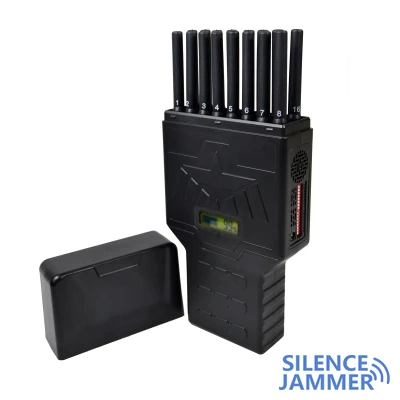Poor-quality jammers expose Russian military's technical shortcomings
As the war between Ukraine and Russia continues, the Ukrainian army has gained significant advantages on the battlefield using low-cost drone technology. cell phone jammer In particular, drone attacks have become the main way for the Ukrainian army to deal with Russian vehicles.GPS jammer Surprisingly, although Russia has advanced anti-drone radio jamming equipment, many of them have performed poorly in actual combat and even caused more serious losses.
According to the blogger's revelation, a multi-frequency jammer priced at $2,400, due to design defects and improper use, not only failed to effectively block drones, but also misled Russian soldiers, making them mistakenly believe that they were protected. signal jammer This device has structural and There are major functional problems, including the orientation of the antenna and design flaws in the cooling system, which cause the jammer to quickly overheat or even melt when working. In this case, the equipment not only fails to protect the soldiers, but becomes a "deadly trap" on the battlefield.Wifi jammer

Antenna direction error: unable to effectively defend against drones
The main function of the jammer is to launch drones to The radio noise interferes with the signal connection between the drone and its operator. However, this design has huge flaws in actual use. The blogger pointed out that many jammer antennas used to interfere with low-altitude drones are designed with the wrong direction. These antennas are facing upwards instead of to the side, and low-altitude drones, especially FPV drones (first-person perspective drones), often attack from the side.
FPV drones are difficult to capture by traditional radar or visual means due to their small size and high speed. Therefore, the jammer should have been designed to be more flexible to deal with drone attacks from different directions. However, these jamming devices of the Russian army can only work when the enemy drone flies directly over it, which is almost impossible on a complex battlefield. Therefore, the design of the equipment severely limits its use scenes, unable to adapt to the flexible and changeable attack modes of drones.
This antenna orientation error also means that the interference range of the device is extremely limited, making it difficult to form an effective protective barrier. Even after the enemy aircraft enters the interference range, the interference signal cannot quickly and accurately affect its communication system. The fixed design of the antenna further weakens its flexibility, making it only suitable for specific environments and unable to cope with the ever-changing attack methods on the battlefield.

Equipment overheating: cooling system design defects
In addition to the antenna problem, the cooling system design of the jammer also has fatal flaws. Radio jamming equipment generates a lot of heat when working, and usually requires an efficient cooling system to maintain the stable operation of the equipment. However, the cooling system design of this jammer is too simple and is only equipped with a small fan. The fan lacks sufficient ventilation design and can only circulate hot air in the closed plastic shell, which cannot effectively dissipate heat.
As the device continues to operate, the internal temperature rises rapidly, causing the plastic shell to begin to melt, and the various components of the device also degrade and fail. Under high temperature conditions, this overheating problem is exacerbated, and eventually the device completely loses its function and becomes "scrap iron" on the battlefield. Moreover, equipment failure caused by overheating may mislead soldiers in combat, making them mistakenly believe that they are protected by technology, while in fact they are exposed to drone attacks and have no defense capabilities.
In sharp contrast to Russia's technical difficulties is the success of the Ukrainian army in drone tactics. Relying on low-priced and stable drone equipment, the Ukrainian army successfully destroyed a large number of Russian heavy vehicles. In one battle, the Ukrainian army launched more than 70 attacks on the Russian army using only drones costing about $500, severely damaging the Russian army's defense.